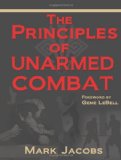 All right. If you’ve read Part 1, you’ve done the foreplay, the participants have gone through the rituals required by their society, and the emotions are high enough to require action. How are you going to write it? What details will you include? Whose point of view will portray the scene the best?
All right. If you’ve read Part 1, you’ve done the foreplay, the participants have gone through the rituals required by their society, and the emotions are high enough to require action. How are you going to write it? What details will you include? Whose point of view will portray the scene the best?
. Continue reading “How to Write a Fight (or Love) Scene Part 2”
Tag: writing fight scenes
How to Write a Fight (or Love) Scene
 The first symptom of a poorly written fight scene is: too much violence. Characters flail away at each other in a multitude of fancy ways, the body count rises, the gore gushes, and it all blends together in an emotion-numbing jumble until readers are tempted to skip to the end to find out who wins so we can get back to the story. The writer who doesn’t know what he really wants from the fight covers it up with technical details and mayhem. Watch a Transformer movie if you don’t know what I mean.
The first symptom of a poorly written fight scene is: too much violence. Characters flail away at each other in a multitude of fancy ways, the body count rises, the gore gushes, and it all blends together in an emotion-numbing jumble until readers are tempted to skip to the end to find out who wins so we can get back to the story. The writer who doesn’t know what he really wants from the fight covers it up with technical details and mayhem. Watch a Transformer movie if you don’t know what I mean.
And love scenes? Same thing. Lots of graphic description of body parts in motion, but strangely unsatisfying. Watch “Fifty Shades of Vanilla” as one reviewer called it. Love and fight scenes cover two primary human activities: taking life and creating it. Let’s see how to make the best of connecting to the basic (note I didn’t say ‘baser’) instincts of our readers. Continue reading “How to Write a Fight (or Love) Scene”
Getting It Right: Throwing a Right Part 2
[This is part 2 of a two part “Getting it Right” series by author and martial arts instructor Mark Jacobs. This series is aimed at helping authors understand and add meaningful and convincing detail in writing fight scenes. Part 1 can be found here.]
 Another fallacy is that a trained martial artist can kill an opponent with a single blow to the heart. Though I’ve previously written about my enjoyment of the martial arts action/adventure novels by author Eric Van Lustbader, and have even praised some of his written fight scenes, when he starts describing the deadly “heart kite” strike, he strays into the realm of fantasy. Yes, in rare instances, people do die from blows to the chest that interrupt the heart rhythm – it’s occasionally happened in little league baseball games when fielders are hit with a line drive – but this is essentially a million to one shot that could never be done intentionally by a fighter.
Another fallacy is that a trained martial artist can kill an opponent with a single blow to the heart. Though I’ve previously written about my enjoyment of the martial arts action/adventure novels by author Eric Van Lustbader, and have even praised some of his written fight scenes, when he starts describing the deadly “heart kite” strike, he strays into the realm of fantasy. Yes, in rare instances, people do die from blows to the chest that interrupt the heart rhythm – it’s occasionally happened in little league baseball games when fielders are hit with a line drive – but this is essentially a million to one shot that could never be done intentionally by a fighter.
Even more ludicrous is the concept of a “delayed death touch,” a strike that can be timed to kill a person at a later date. Again, a person might receive an injury during the course of a fight that later causes him to fall over dead but this is sheer bad luck and not something anyone can intentionally do to another person.
Besides technique fallacies, the second major category of mistakes seen in this area are the simple informational/factual errors that authors commonly make when writing about the martial arts. Years ago, it was common to refer to “the judo chop.” But anyone who bothers to do a little bit of research will quickly discover judo is a wrestling style and has no “chop.” That is a karate technique, where it is more commonly known as a “knifehand” or, in Japanese, as a “shuto.” Continue reading “Getting It Right: Throwing a Right Part 2”
Getting It Right: Throwing a Right Part 1
 Having previously written about what makes a good literary fight scene, I thought an appropriate follow up might be to examine some mistakes that can potentially ruin the action in a novel.
Having previously written about what makes a good literary fight scene, I thought an appropriate follow up might be to examine some mistakes that can potentially ruin the action in a novel.
Now, if you’re like me, nothing can grab your attention in a book like a nicely portrayed bit of violence. Indeed, the climax to many an action/adventure novel is often some sort of life and death brawl between hero and villain. A fight scene can be a graphic example of a hero’s innate superiority or a chance to put him or her into a bit of peril. It can offer the reward of giving an annoying antagonist his comeuppance or just be used to keep the reader engaged during an otherwise slow section of the story. Unfortunately, when it comes to portraying these scenes, most writers are not fighters and don’t know the difference between throwing a right and throwing some write.
Of course, the average reader also may not be all that well versed in the intricacies of combat and, therefore, any mistakes or inaccuracies found in a literary fight scene may simply pass by them unnoticed. But for someone who does know a little about how violence goes down in the real world, poorly written or inaccurate action scenes can leave you shaking your head saying “That could never happen.” In extreme cases, such as a novel purported to be gritty and realistic, it can ruin the whole tenor of the story. Continue reading “Getting It Right: Throwing a Right Part 1”
